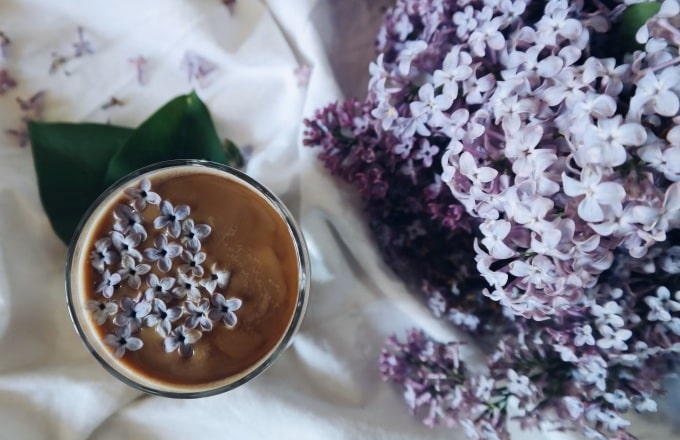| |
|
The culinary world is a vast and
creative landscape, constantly
evolving as chefs and home cooks
experiment with flavors,
textures, and ingredients. One
intriguing facet of this
culinary exploration is the use
of floral ingredients in
cooking. Edible flowers have
been used in various cuisines
around the world for centuries,
adding not only a burst of color
but also unique flavors and
aromas to dishes.
If
you want to adorn your dinner
table with a bouquet of fresh
flowers, you can arrange for
flower delivery in Dubai,
Canada, and from any corner of
the world through our partner
MyGlobalFlowers.
|
|
|
| |
|
 |
|
|
| |
|
In
this article, we'll delve into
the enchanting world of floral
ingredients in cooking and
discover how they can elevate
your culinary creations.
|
|
|
| |
|
A Feast for the Eyes
One of the most immediate and
visually striking aspects of
using edible flowers in cooking
is the vibrant array of colors
they bring to your plate. From
the vivid orange of nasturtiums
to the deep purple of violets,
edible flowers can turn an
ordinary dish into a work of
art. Garnishing with flowers
allows you to play with color
palettes and aesthetics, making
your culinary creations visually
appealing.
|
|
|
| |
|
Unique Flavors and Aromas
Edible flowers offer a spectrum
of flavors and aromas, ranging
from delicate and subtle to bold
and robust. For instance:
▪
Lavender: Known for its calming
scent, lavender adds a floral,
slightly sweet flavor to dishes
and desserts.
▪
Rose: Rose petals can impart a
fragrant, subtly sweet taste
with hints of citrus and spice.
▪
Nasturtium: Nasturtium flowers
and leaves provide a peppery,
slightly spicy flavor,
reminiscent of arugula.
▪
Chive Blossoms: These tiny
purple flowers carry the mild
onion flavor of chives.
Experimenting with these unique
flavors allows chefs and home
cooks to craft dishes that
tantalize the palate and
introduce diners to new taste
experiences.
|
|
|
| |
|
Culinary Versatility
Edible flowers are incredibly
versatile and can be used in
various culinary applications.
They can be:
▪
Garnishes: Sprinkle petals on
salads, soups, desserts, or
cocktails to add an elegant
touch.
▪
Infusions: Create floral syrups
or infuse oils, vinegars, or
spirits with the essence of
edible flowers.
▪
Baking: Incorporate dried edible
flowers into bread, pastries, or
cookies for a delightful twist.
▪
Salads: Toss edible flowers into
green salads for a pop of color
and flavor.
▪
Tea Blends: Brew herbal teas
with edible flowers like
chamomile or hibiscus.
|
|
|
| |
|
Nutritional Benefits
Beyond their culinary appeal,
some edible flowers offer
nutritional benefits. For
example, marigolds contain
antioxidants, while calendula
flowers have anti-inflammatory
properties. Additionally, many
edible flowers are rich in
vitamins and minerals, making
them a healthy addition to your
diet.
|
|
|
| |
|
Foraging and Growing Your Own
While it's possible to find
edible flowers at specialty
stores and farmers' markets, you
can also forage for them in your
own garden or local
surroundings, provided you can
ensure they haven't been treated
with pesticides or herbicides.
Alternatively, consider growing
your own edible flowers. Options
like nasturtiums, pansies, and
calendula are relatively easy to
cultivate and can thrive in both
gardens and containers.
|
|
|
| |
|
Caution and Identification
When working with edible
flowers, it's crucial to be
certain of their identity and
ensure they haven't been exposed
to chemicals or toxins. Not all
flowers are safe to eat, so
consult a reputable resource or
expert if you're unsure. Avoid
using flowers from florists or
floral arrangements, as these
may be treated with chemicals
not intended for consumption.
|
|
|
| |
|
Culinary Creativity
Exploring floral ingredients in
cooking is a culinary adventure
that allows you to unleash
your creativity in the
kitchen. Whether you're crafting
a delicate lavender-infused
crème brûlée, a zesty nasturtium
salad, or a fragrant rosewater
syrup for desserts, edible
flowers offer a unique and
captivating way to elevate your
culinary repertoire.
|
|
|
|
|